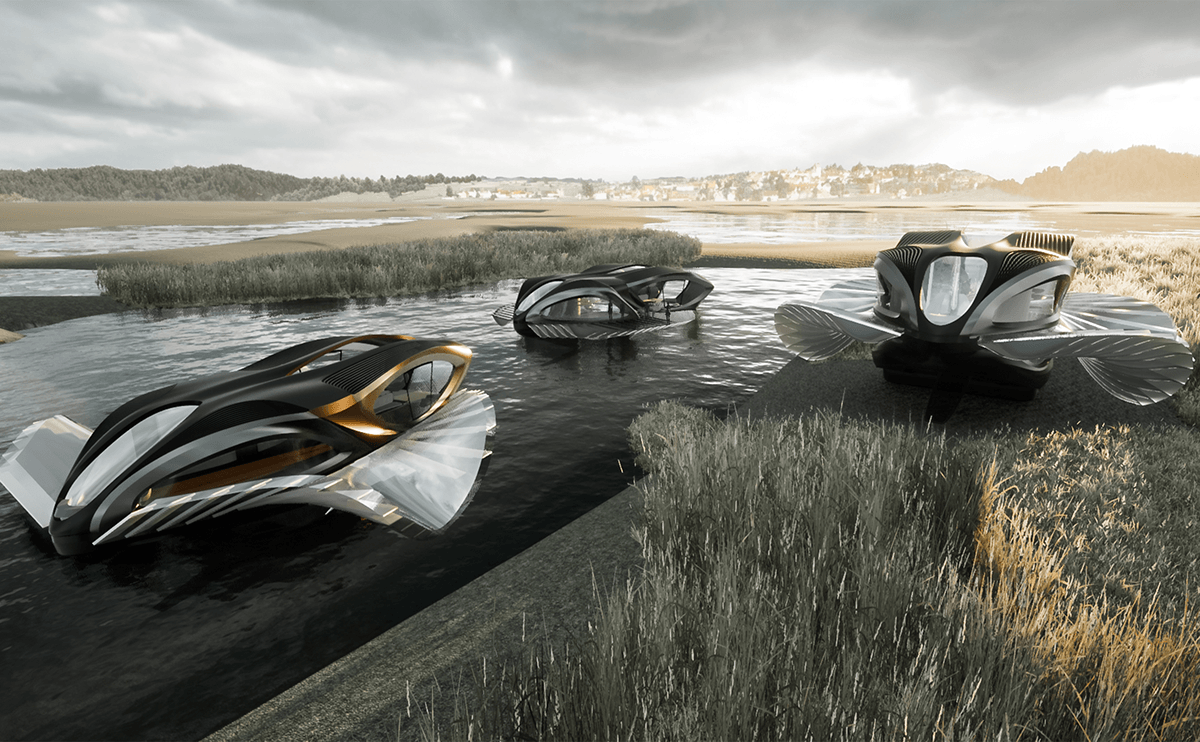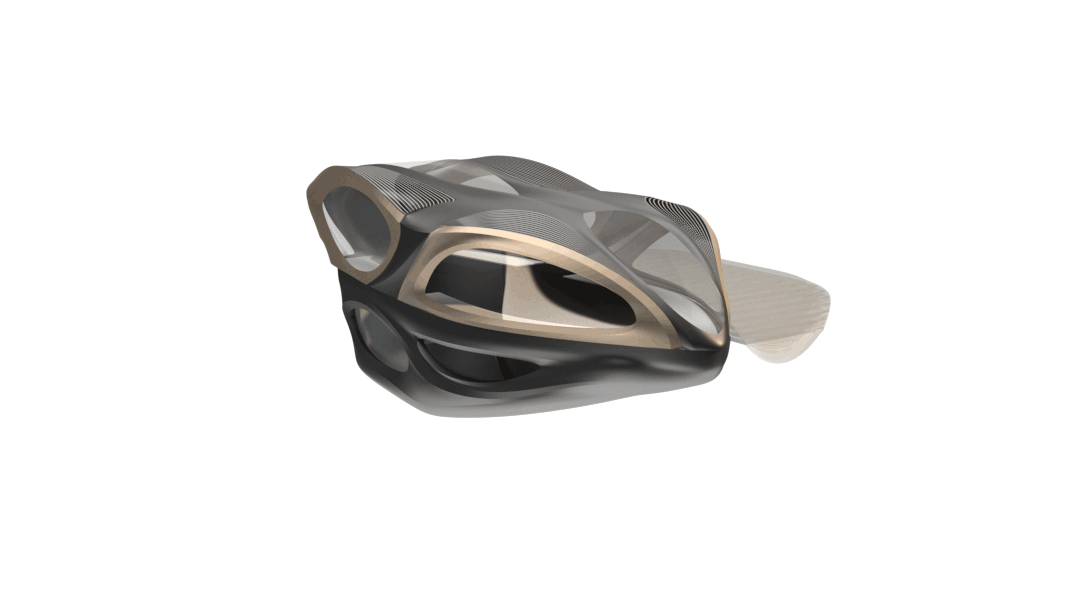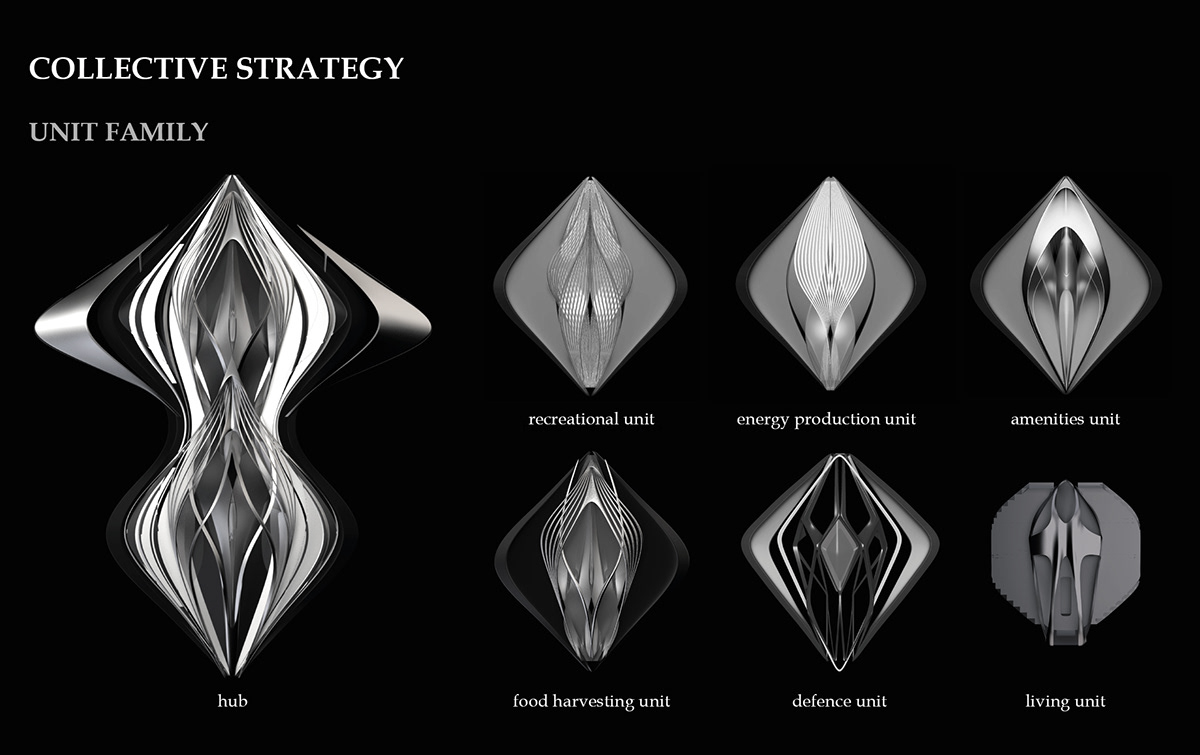
The research gravitates around the use of programmatic overlays and multi-potent spatial interfaces, whilst experimenting on amphibious environments as testing scenarios for extreme adaptive and transformational qualities. Amphibious Choreography introduces a new blueprint for an alternative living oscillating between the land and the water.




Amphibious Choreography redefines a hybrid, mobile, space-efficient, and self-sustainable living driven by ergonomics and proxemics to adapt, challenge, and take advantage of the issues. The settlement can conform to both land and water conditions, with the majority of existence remaining above water, and mobility at the core to enable this dynamic life.

The Thames Estuary is where the mouth of the River Thames meets the North Sea. The estuary is one of the largest inlets on the Great British coast and is hence a suitable testing ground.
DESIGN DRIVERS
ERGONOMICS AND HUMAN BODY
Functional human postures traced into triangulated geometries to observe what kind of polygonal shapes and volumes can be produced.

Derived as a response to the immediate needs of a human being, after studying the relationship between human body postures and their geometrical volumetrics, tracking the daily movement cycle in trails and defining the space of occupancy by halo logging the volumetric trails.



UNIT TRANSFORMATION
Rotation of the sliding floor plates activates the expansion of the semi-rigid walls and consequently the roof, increasing the overall volumetrics of the form and the spatial occupancy of the interiors



MOBILITY
Fins are subdivided into strips for a stronger surface with smooth sinusoidal movement, with a flexible membrane covering the structural strips and making a smooth surface for the fins to be used as decks or surfaces for energy generation, and inflation underneath the mantle skirt to provide stability on water in static conditions and acting as high-pressure air beams for structural strength when on land


MOTION OF FINS IN DIFFERENT FREQUENCIES
The fins are designed to be able to change the amplitude and frequency of the sinusoidal wave as a response to the requirements and external conditions or environments, changing the speed of the system, and consequently the energy generated through the solar and kinetic powers of the fin movement.














PROTOTYPING




